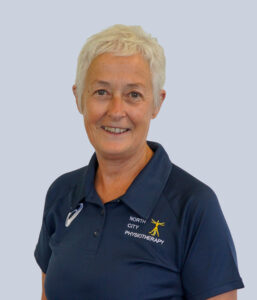
A dislocated shoulder occurs when the ball of your upper arm bone (humerus) is forced fully out of its normal position in the shoulder socket (glenoid). A shoulder dislocation is usually associated with extreme pain and an inability to move your arm until it is relocated back into the socket.
Shoulder subluxation is a partial shoulder dislocation, when the shoulder joint comes part way out before relocating.
WHAT CAUSES A DISLOCATED SHOULDER?
Your shoulder is the most mobile joint in your body. It has an amazing range of motion. However this huge range of motion comes at the cost of its stability. Shoulder dislocation and subluxation can occur as a result of a sudden trauma or from underlying shoulder joint instability.
- Traumatic Shoulder Dislocation – High speed or traumatic shoulder dislocation occurs when your shoulder is in a vulnerable position and is popped out at speed. Commonly this is with your arm out to the side during a rugby tackle.
- Repetitive Shoulder Ligament Overstrain – Some people can dislocate their shoulders with relative ease, sometimes just due to their normal anatomy. Sometimes, it is the result of repetitive overstretching of the shoulder joint more common in swimming and sports which involve overhead throwing like cricket and baseball.
WHAT ARE THE SYMPTOMS OF A DISLOCATED SHOULDER?
The history of a shoulder that is traumatically “popped out” of the joint is the classic sign of a shoulder dislocation. Shoulders that do not stay out of joint are more likely to have partially subluxed before self-relocating. A shoulder that is dislocated will look deformed.
Symptoms include:
- Shoulder pain
- Repeated instances of the shoulder giving out, with chronic shoulder instability
- A persistent sensation of the shoulder feeling loose, slipping in and out of the joint, or just “hanging there”
- Apprehension to put your shoulder in certain positions
- Pins and needles, numbness or arm weakness.
DISLOCATED SHOULDER TREATMENT
Both acute and repeated shoulder dislocations are normally treated initially with non-operative rehabilitation guided by your physical therapist. Surgery to stabilise the joint may be considered should your exercise-based treatment fail.
After the first time you dislocate or sublux your shoulder, recurrence is very likely, especially in younger patients.
The recurrence rate in patients under 25 years old is about 80%. The recurrence rate decreases as your age advances. Resumption of athletic activities can be taken up on an individual basis, but 6 to 8 weeks after injury is minimum and three months is probably safer to avoid re-dislocation.
Surgery may be necessary to repair torn or chronically overstretched ligaments, repair Bankart lesions or Hills-Sachs fracture (these are complications that develop due to the dislocation). With surgery, the chances of recurrent dislocation for all patients overall are about 5%.











